CLAIRE BARRAND goes searching for Welsh giants!
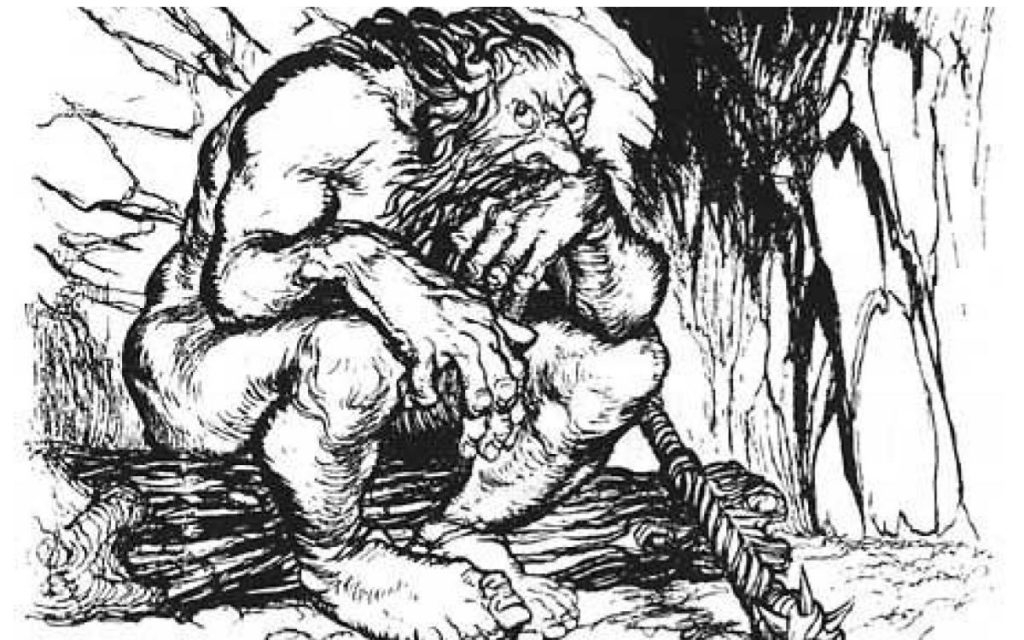
Giants or “Cewri” feature prominently in Welsh folklore and mythology.
Among the most notable are Bendigeidfran fab Llyr, a mythological king of Britain during the Second Branch of the Mabinogi, Idris Gawr of Cader Idris, and Ysbaddaden Bencawr, the chief antagonist of the early Arthurian tale “How Culhwch won Olwen”.
Both Arthur and Gwalchmai fab Gwyar feature prominently as giant-slayers in Welsh tradition.
But when reading these stories, you automatically think of these as mythological creatures, fairy stories created by those with a vivid imagination. Have you ever considered the possibility that they really did exist?
Or, that they do indeed still exist on our earth today?
Is it possible that there is a surviving species of hominoid that had branched off well before Neanderthal man developed throughout evolution to be what we are today?
In the Solomon Islands, many people believe that the Giants were there before they were and many believe that they are still living today on Guadalcanal, (and goodness know where else) and even claim that some of their own people are crossbred descendants from the Giants.
Discovery is not as simple as you might think either, the islands are heavily shielded by military not to mention the fact that you would face a helicopter ride and then a week long trek into the depths of the most dense jungle to reach these areas, also fiercely protected by local tribes who uphold strong superstitions and will not allow non natives to simply trespass into territory they hold as highly sacred.
It is little wonder they remain, as yet, undiscovered.
What is a giant?
First of all, let’s examine, what is a real giant?
Are they huge humanoids or could they be just exceptionally tall people?
Giants are traditionally thought of as the monsters of human appearance but extraordinary size and strength common in the mythology and legends of many different cultures.
The word giant, coined in 1297, was derived from the “gigantes” of Greek mythology.
In the Bible, Genesis 6:4-5 tells of the Nephilim before and after the Flood. According to Genesis 7:23, the Nephilim were destroyed in the Flood, but then, Nephilim are reported after the Flood also.
There are effectively two views regarding the identity of the nephilim, which follow on from alternative views about the identity of the sons of God.
Through the centuries, certain archaeologists have searched for fossil evidence of a race of giants.
Alleged evidence I have been able to trace with a simple online search includes:
- The Giant of Castelnau: Estimated at 11 feet 6 inches (3.5 m) tall. Discovered by the anthropologist Georges Vacher de Lapouge at the Bronze Age cemetery of Castelnau-le-Lez, France in the winter of 1890.
- 1894 press accounts mentioned a discovery of bones of human giants unearthed at a prehistoric cemetery at Montpellier, France. Skulls “28, 31, and 32 inches in circumference” were reported alongside other bones of gigantic proportions which indicated they belonged to a race of men “between 10 and 15 feet in height.” The bones were reportedly sent to the Paris Academy for further study.
- The remains of the Si-Te-Cah or Sai’i, a legendary tribe of red-haired cannibalistic giants, which were allegedly found in 1911 by guano miners in Nevada’s Lovelock Cave. However, the size and nature of the fossil remains has been disputed by Adrienne Mayor in the book, Fossil Legends of the First Americans.
The earth is a big place however, so how was there room for a race of giants in my humble home of Wales?
I stand by a theory that where a country has a rich faerie folklore, then you will also find stories of giants, UFOs and other cyprids and some research into Welsh history revealed that I was correct!
Hairy Welsh Giant of Nant Gwynant, North Wales
Villagers in Nant Gwynant in North Wales have long told a story about how a cave in the valley came to be named.
Long ago villagers and shepherds in the area were plagued by a thief that would break into their homesteads.
They would awaken to find that their goats and cows had been milked, food had been stolen and the best sheep taken during the night.
This went on for some years and with no proof ever being found as to who the suspect was.
One day a shepherd was returning from the mountains later than usual and spotted something strange; a huge burley naked man covered from head to toe in thick red fur was resting on a neighbouring hill.
The shepherd suspected that this out of place and strangely longhaired giant might be the thief that was plaguing the village so the shepherd snuck past the man without being detected and ran back to the village as soon as he was out of sight.
The villagers tried many times to capture the giant man but all attempts were futile.
After everything they tried to catch the hairy man had failed the men of the village reluctantly gave up and resigned themselves to the fact that the thefts would continue.
However, one woman was so angered by her frequent losses she decided to stay up every night and hide herself in the front room of her farmhouse to wait for when the hairy man decided to pay a visit.
Sure enough after a few weeks the hairy man paid a visit to the wrong house and the lady was waiting with a hatchet.
She remained hidden until the man had squeezed his bulky frame halfway through the window before she struck the hairy man with her hatchet.
The unexpected blow cleaved off the hairy man’s hand in one blow and he recoiled back out of the window before the woman could smite him with a further whack.
The brave woman dashed out of her door, hatchet in hand ready to finish the man off but by the time she had gotten outside he had fled.
When the village awoke the next day and the men learned what had happened they followed the trail of blood the hairy man had left behind to a cave beneath a local waterfall.
As the big hairy man was never seen again it was assumed by the villagers that he had died in the cave, so the cave was named ‘the cave of the hairy man’.
Welsh Giants in folklore
On 21st October 1899, The Rhyl journal ran an article titled “Welsh Folk Lore, Giants and Other Shadowy Matters” written by Rev. Elias Owen author of “Welsh Folk-Lore” A Collection of the Folk-Tales and Legends of North Wales in 1896.
The book opens with a long description of The Origin of the Fairies or “Y Tylwyth Teg“, explaining that the name means “the Fair Tribe”, who were “spoken of as a people, and not as myths or goblins, and . . . are said to be a fair or handsome race.” He wrote about the giants the following..
“In various parts of Wales we have names of places called after giants, and legends are associated with these places.
“These are mythical beings, and the stories connected with them are all fanciful creations of fervid imaginations still they are worth recording, and it would be interesting to have a complete collection of tradition, of these fabulous beings arranged in such a convenient form that they could easily be referred to.
“We want workers to collect, before it is too late, every shred of folklore in Wales, whether of giants or other cognate matters. Physical phenomena are often ascribed to giants. It is not necessary that more should be said here than to mention a few of these In Montgomeryshire, not far from Welshpool, is a conical bill called Breidden, and a few hundred yards nearer Welsh- pool there is another hill called Golfa.
“They block up the valley of the Severn in those parts to a certain extent. They seem, at a distance, to have been artificially constructed, and a local tradition was told to me, on the spot, that these hills were the work of the giant and his wife. It seemed that the inhabitants of a certain town in pre- historic times had offended this great man, and he determined to destroy both it and its people. To accomplish this, he and his wife, laden with large burdens of stones, started for the offending city.
“But information of the giant’s intentions preceded him, and one of the pigmy inhabitants of the Court was delegated to frustrate his design. The wise little man met the giant, groaning under his huge load, and was accosted by him asking for directions.
“I came from that poor place,” said the man. “everything I have on were new when I started, but now they are rags.”
“Ah,” said the giant, “is that so; then I go no further,” and down went the huge burdens of both wife and husband, and there they remain to this day conspicuous for miles around, and they are known as Breidden Hill and Golfa.
In Llanrhaiadr Mocbnant parish there are some huge rocks called Baich y Cawr a’r Cawres, a Ffedogaid y Forwyn (the Giant’s Burdens, and the Servant Girl’s Apronful). In connection with these is a curious legend.
It is said that a giant residing in the neighbouring mountain determined to build a bridge over a hollow called Pant y Cawr, and that he, with his wife and servant girl, intending to complete the undertaking before the dawn of day, to surprise their neighbour, who lived on the opposite heights.
But that when engaged in carrying the stones for their work a neighbour’s cockrel crew, and warned them that day-break was at hand, and being thus frustrated in their design of finishing their work during the hours of darkness they hastily threw down their respective burdens, where they still remain, and hurried homewards.
We have in this legend several interesting particulars, which go to prove that, in its present form, the tale is almost modern. The wish to accomplish the work in one night has its counterpart in the belief, which was common even a hundred years ago, that could a cottage be erected on the common in a single night, and smoke be got through the chimney before the rising of the sun, that cottage would become the property of the builder for ever, and that consequently he could not be ousted from his house. In fact, many a small house in Wales, and others which were not small, have the distinctive name of Hafodnnos, intimating that the residence had been erected in one night.
Again, the cock crowing is a modern superstition, for it was believed in the days of our great grand- fathers, that at the crowing of the cock, fairies spirits, ghosts, goblins, and devils were obliged to rush away to their dread abode.
Shakespeare, in his immortal plays,’ perpetuates this belief. Thus, Pwck was to meet the Fairy King before the first cock crow. Many other poets have likewise recorded this fancy. Another modernism is the servant maid, with her well-filled apron, accompanying her master and mistress. She, poor thing, was a regular slavery belonging to the days of civilization. We should not be surprised at these anachronisms, for ancient faiths, as they pass along the ages, receive a tinge from everything they come in contact with, so that we find old and new things combined, and it requires ingenuity and knowledge to disentangle them one from the other.
But now, who were the giants that hurled these huge rocks about, and threw up our hills? They were the forces of nature, deified by our fore-fathers, and spoken of as human beings. The fabulous traditions of these monster’s date from truly prehistoric times. Their prototypes were found in Greece.
There is a secluded valley, which has for its centre Cann Office in Montgomeryshire. Formerly, there lived in these parts a couple of giants. The country was big enough for both, but two giants cannot live together or even near each other.
They must fight if they do, and so it was with these two worthy representatives of those days. They quarrelled, and in a way worthy of giants they determined to settle their disputes by hurling great masses of rocks at each other, in hopes that these stones would settle their disputes satisfactorily, at least to one of them.
One of these stones still remains, it is called Maenhir, and is or was in a field near Llymestyn. It has been broken, but there are large fragments lying around. The tradition is that it was thrown by a giant from the top of a hill called Gogerddad, more than a mile distant. The other giant, who lived on the top of a hill called Esgair, threw a stone called Maenllwyd, in recent times, towards his antagonist.
Formerly it lay in a field near the turnpike road below Garthbeibio church, and it is said that it had on it marks of the giant’s fingers, showing with what force he had grasped it, when hurling it. This stone has been broken and used for wall building. These giants seem to have over-rated their strength, for both stones fell short of their mark, and lay harmless on the plain, at a distance from the hills to which they had been directed.
Many of these isolated stones, some erect and some piostrate, are to be found in many parts of North and South Wales, and they are often associated with giants of olden times, but here again the imagination of the people is at fault, for giants had nothing whatever to do with them. They owe their position and worn appearance to the action of glaciers that once covered the hills of Wales, just as they do in our day many lofty mountains in various parts of the world. Ice and snow carried them along, rounding their surfaces in their journey, and making grooves in them as they travelled along under the pressure of the huge masses of frozen snow lying upon them, until at last they were deposited quietly on hill sides or in valleys at the banes and edges of exhausted glaciers.
Such were the giants who have left among us boulders that our forefathers could not account for without the aid of superhuman strength. I will now mention one giant that belongs to the glacial period. We have all heard of Cader Idris, or the seat of Idris Gawr (the Giant Idris).
At the foot of this hill is a small tarn, called Llyn y tri graienyn, or the pool of the three grains, which, according to the legend, were the three pebbles which Idris found in his shoe, and as they annoyed him, he took them oat and flung them to their present position. They are three large stones or rocks detached from the mountain above, by glacial action.”
He goes on to say,
“Mr Owen Jones, Manchester, told me that the navvies engaged on the railway between Bangor and Holyhead, came upon skeletons in Anglesey seven and eight feet in length, and the author of the “History of Aber Conwy states that many bones of very large dimensions were found in or near Conway. An old friend, Hugh Jones, Gorlanau, Llandinorwig, found on his farm a cist faen, and within was a skeleton of a man nine feet three inches in length.”
This would seem not be be the only case I have found reported in Welsh newspapers during the last century.
On 10th April 1914 The Abergavenny Chronicle ran the following report.
“GIANT SKELETONS UNEARTHED. A skeleton which, it is stated, appeared to be that of a person 10 ft. in height, has been discovered at Dysart, Co. Louth. It was one of three unearthed by two men who were digging the foundations for labourers’ cottages. Each skeleton was in a separate grave completely encased with stones. The skull of the giant was in a state of perfect preservation, and measured 18 in. from the crown to the chin, and the leg hones were abnormally large. The re- mains are supposed to be those of a pre- historic age.”
Then on the 22nd August 1908 the Cardiff times reported,
“PETRIFIED GIANT. RAILWAY COMPANY’S QUEER STORAGE. To storage of Irish giant, There is an item which appears in the books of the L. and N.W. Railway at the Worship-street goods depot. The story is a peculiar one. Nearly 32 years ago a coffin-like receptacle of stone arrived at the Broad -street goods depot, consigned from Manchester. It contained the mortal remains of a petrified Irish giant, weighing close upon three tons, and it took a dozen men and a ten-ton crane to shift it. This gigantic skeleton is 12ft. 2in. in height, has a chest girth of 6ft, one foot has six toes. Mid the length of the arm is 41ft. It was accidentally dug up many years ago, in County Antrim by a Mr Dyer, who made a considerable amount of money by exhibiting it in Manchester and Liverpool. A showman named Kershaw afterwards obtained a partnership in the exhibition, but owing to some disagreement the giant was sent to London without his knowledge. While it was still on the railway company’s premises Kershaw brought an action in Chancery and obtained an injunction to prevent the company delivering it until the ownership was satisfactorily settled. Nothing further was heard, and the coffin with its grim contents was moved to the Worship-street goods depot, where it still remains, and the company have opened a fictitious account, in which they pay, theoretically, several shillings a week for storage.”
I would dearly love to know what became of these skeletons…!
Of course, I had to see if Gilwern, my small unsuspecting home village also had a legend of Giant proportions, and I was not disappointed. Long Mans Grave is located on the road from Gilwern to Pwll Du at Twyn Wenallt. According to local folklore, a man of extraordinary proportions lived in the area and had six fingers on each hand. When he died, his body was carried to be buried at Llanwenarth Church however a terrible storm hampered the efforts and his bearers decided he was simply too large to go any further and buried him on the spot. Long Mans ghost is said to haunt the area and was seen peering through bedroom windows for many years after!
In conclusion, my own views about giants are that they did indeed exist, and I believe after doing much more extensive research, that they remain living in unique remote locations on our amazing planet earth.
After all, many prehistoric species of plant, animal and fish are discovered every single day living in caves and the deepest oceans all over the world, is it so unbelievable that a humanoid species could also have managed to survive in the depths of the densest jungles, living in underground tunnels and without interruption by man? Many bones have alleged to have been discovered already often dismissed as a plethora of online hoaxes dilute the truth, it is difficult to ascertain which are real discoveries, and I am unsure as to what science would be allowed to reveal even if they were proved to have the DNA of a subspecies of human.
Is the world ready to accept this?
Could it be possible that the giants carefully gather and bury their own dead in remote caves that are as yet inaccessible? Or that the composite of these bones cause them to dissolve over time and that is why we have very little to go on? There are many theories, and add to that fusion the sightings of Bigfoot, Sasquatch, yeti and other crypt-ids, ghosts, faerie folk and reports of strange lights and mysterious disappearances of people and animals all around the planet, let us also deliberate, could we possibly be talking about one and the same entity?
I for one will continue to collect stories with open-minded fascination.

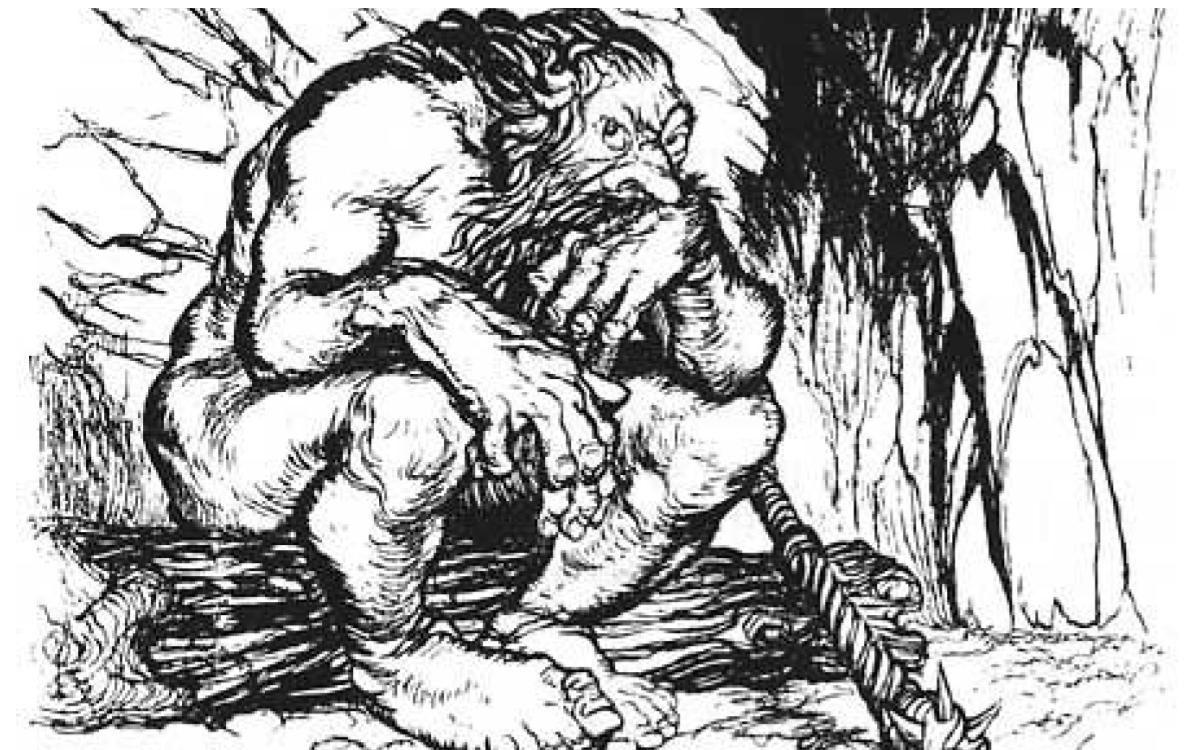
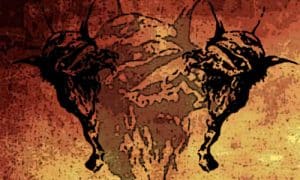
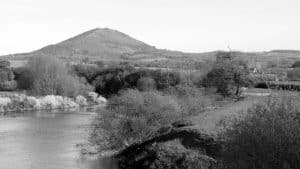

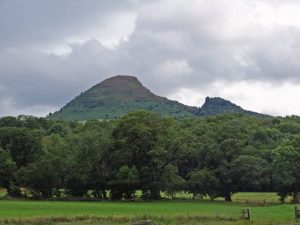

The accounts of the giants are absolutely true, and extensively documented. They are “Amorites” from the Levant. They range in height from 6′ up to (seemingly rarely)16′ but most were around 8′ – 11′ in height with extremely powerful muscle anchors. Government have “allowed” knowledge of them to slip into obscurity but if they interest you – and so they should! then get on Amazon right now and buy “The Encyclopaedia of Ancient Giants in North America”, by Fritz Zimmermann, and be prepared to have your paradigm turned upside down.